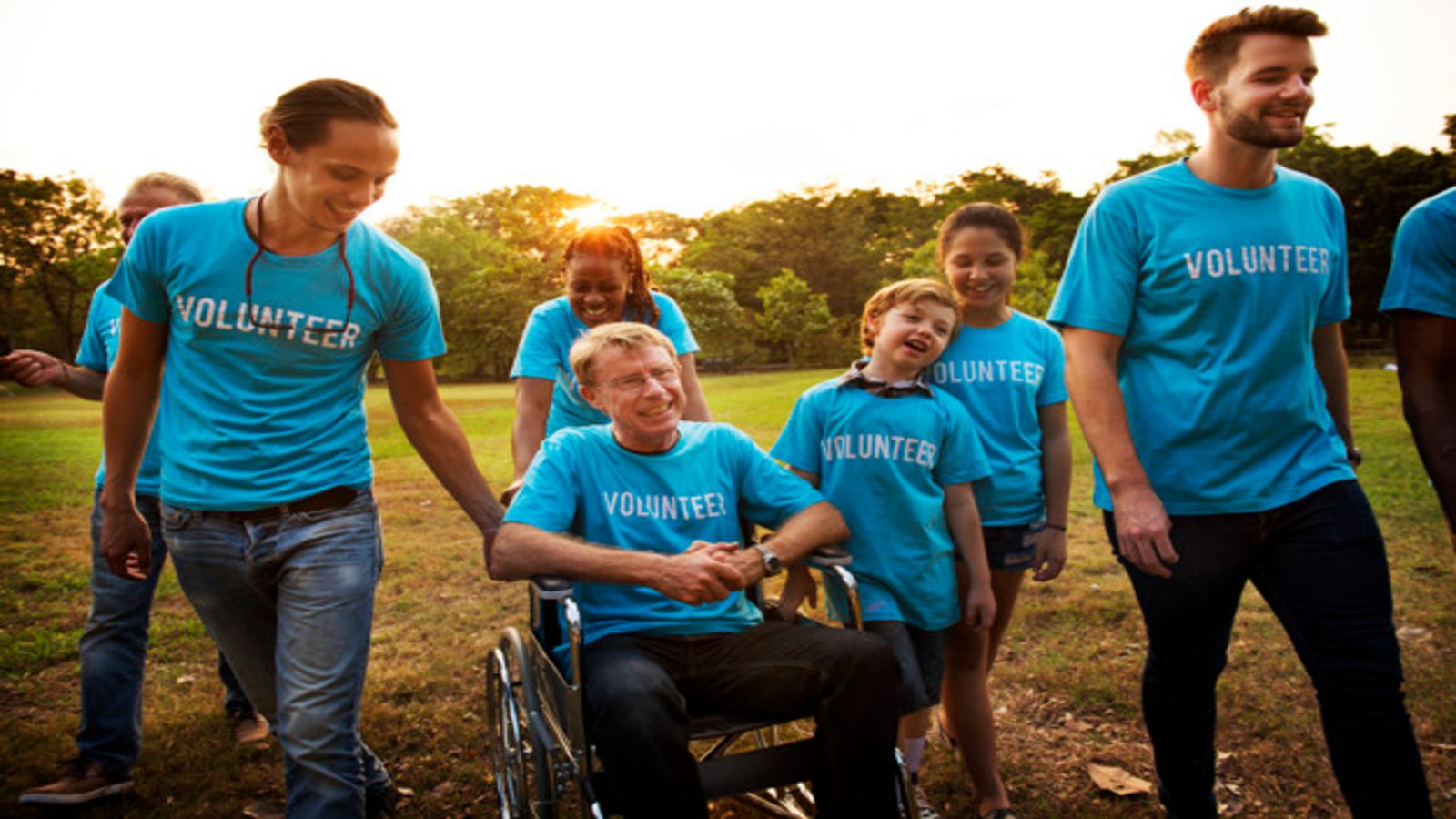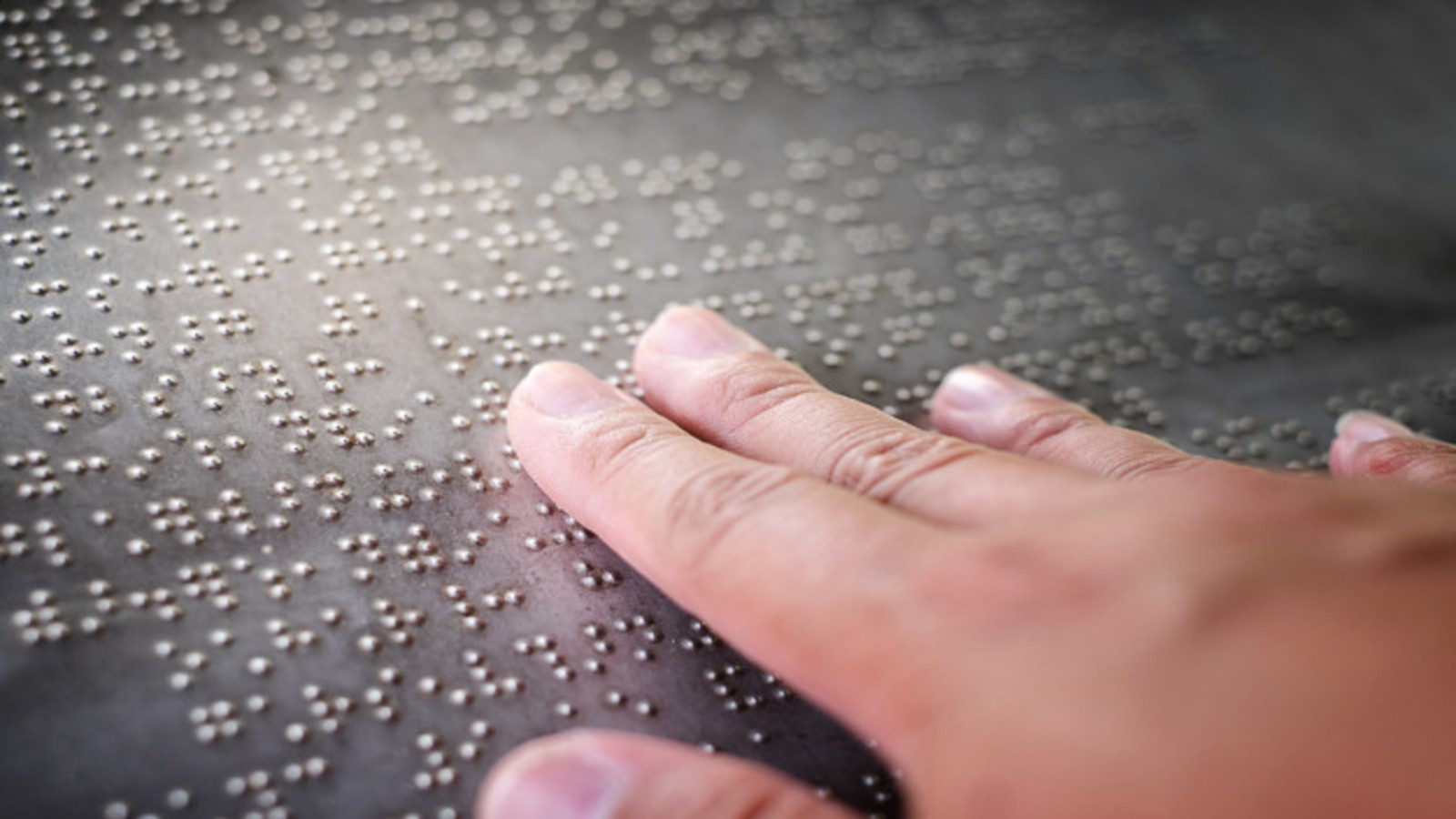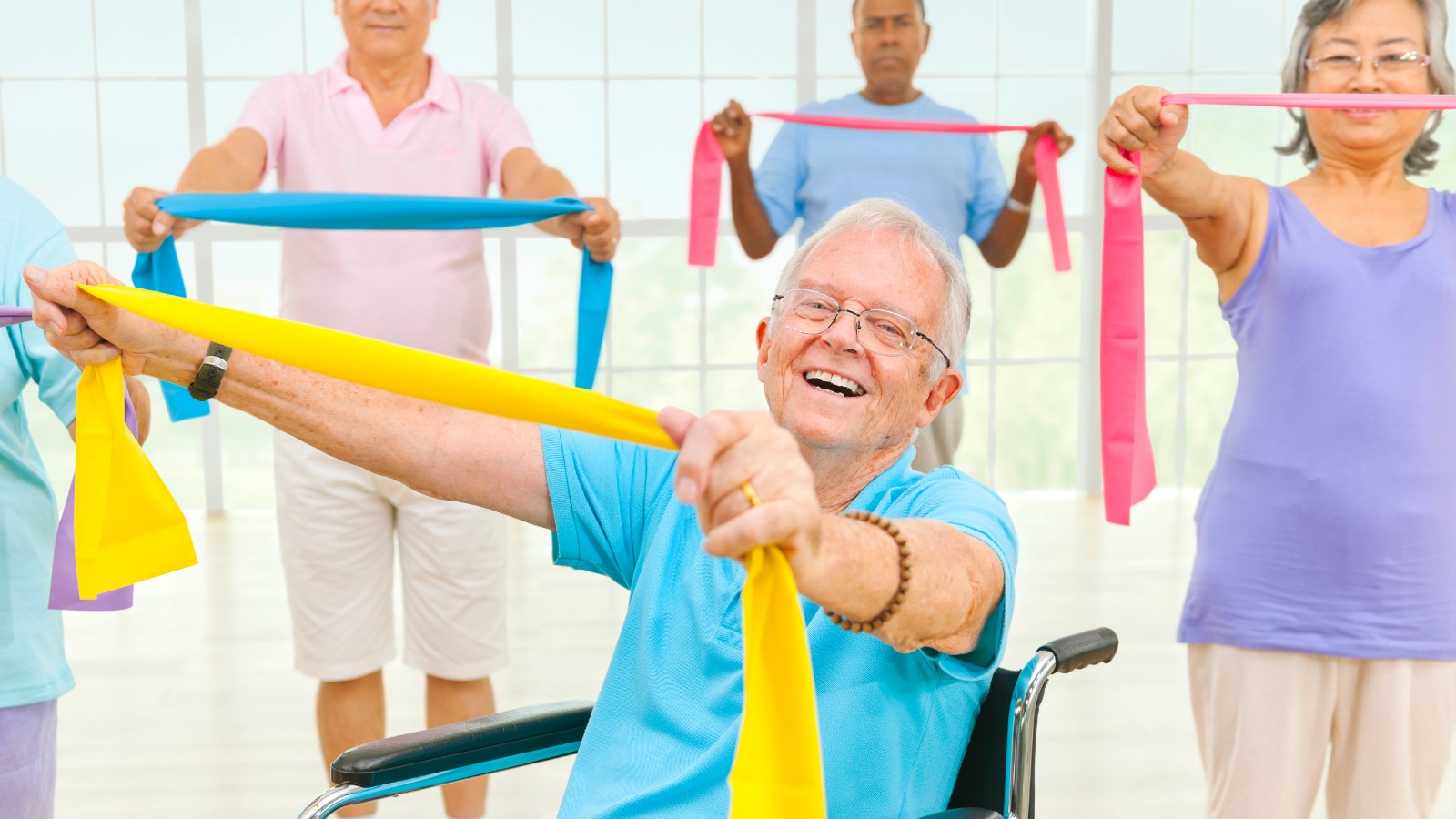Everyone is different, everyone has areas of strengths and areas of weaknesses, EVERYONE wants to belong and be included.

Principles and practices of;
Access and equity - Access and equity are principles of social justice. Access is the capacity people have, to physically enter a building or space and also to use a facility or service. Equity relates to fairness. It recognises that some people are more disadvantaged than others in being able to access services and facilities and therefore there is a responsibility to address this lack of equity.
Many people with a disability do not have the same access to places and services as other people because their needs in areas such as mobility and communication have not been met.
Access and equity are concepts against which all services should be measured. They will be reflected in how decisions are made about who is eligible for a service, how resources are allocated, how the needs of people from diverse backgrounds are met. Access and equity are covered in the Federal and State Disability Discrimination Acts.
Examples of an organisation promoting accessibility and equity, include;
-
Encouraging members from diverse backgrounds to seek employment at or use services of the organisation.
-
Not excluding anyone from taking part or being employed by the organisation based on race, religion, gender, age, sexual orientation, country of birth or disability.
-
Designing programmes and providing services that are delivered on the basis of accessibility to all who qualify to use or participate in them.
-
Scheduling sessions or meetings in locations that are convenient and accessible by someone with a disability, reduced mobility or someone relying on public or special transport.
-
Presenting information and material in an accessible form, such as, in simpler English or in multiple languages, suitable audio/visual technology, providing translations or communicating in sign language for the hearing impaired.
Confidentiality - As a legal term, confidentiality refers to a duty of an individual or group to refrain from sharing confidential information with others, except with the express consent of the other party. Discretion is not automatically assumed, but requires an express agreement between the parties that such information will be kept secret. It is important to have an appropriate confidentiality clause in any agreement or contract, where parties require certain information to remain confidential.
Certain professionals need to disclose an individual's personal information to others but under certain specific circumstances only, for example referring a client to another service. Individuals may waive the confidentiality of their records by giving written permission for a service provider to share that information with a specified person or entity.
There is no specific confidentiality legislation in Australia, it is governed by the ‘common law’ guided by the Disability Discrimination Act 1992 (CWTH) and each state and territories legislations for Privacy and Personal Information Protection. The Australian Privacy Principles require service providers and agencies to have their own policies and procedures in place to protect the privacy of service users.
Examples of practices that protect the privacy of service users (clients) include;
-
Do not discuss service users’ information in informal settings with people outside the organisation, such as friends or family.
-
Do not discuss individual cases in public settings where there are other people present e.g. during meetings, conferences etc.
-
Do not disclose personal information about a service user to any third party without the service user’s informed consent.
-
If you need to release a service users’ personal information or disclose information about them to another party, you need to seek the ‘informed consent’ of the service user.
-
File documents that contain personal information about service users appropriately and avoid leaving them in areas where they can be seen by other people.
Empowerment/disempowerment in relation to people with a disability - Empowerment involves a process of giving power or control over their own life, to an individual or group that has traditionally been marginalized, had control of their own life limited/surrendered. Empowerment can be facilitated by; creating opportunities, providing support (services, technology, finances), addressing fears, providing knowledge/training on addressing individual needs, raising confidence, enabling choice and self determination.
Disempowerment is the process of removing power or control from an individual. It is important to remember that this can be done without intending to. It is essential that decisions and actions are left up to the person with the disability so that disempowerment does not occur deliberately or accidentally.
What works is placing the people with a disability at the center of the design, co-contribution, focusing on who they are and what they like to do rather than their disability and what they can not do.

Community inclusion is the opportunity to live in the community and be valued for one’s uniqueness and abilities, like everyone else. Community inclusion is the right of all people.
Community inclusion encompasses; housing, employment, education, health status, leisure/recreation, spirituality/religion, citizenship and civic engagement, valued social roles (e.g., marriage, parenting), peer support and self-determination.
Community inclusion should result in the participation of people with disabilities similar to that of all others without a disability label. The following video details the Community Inclusion Initiative and its principles;
Community inclusion principles to enable effective participation of people with a disability, include:
-
Positive community attitudes and behaviours - Changing negative community and employer attitudes toward people with disabilities, and challenging stigma.
-
Engagement of the individual - With sensitivity, respect, and fairness, without assumptions. Identifying what is important to the individual. Having the opportunity to form meaningful relationships and grow social networks. A sense of belonging as opposed to a sense of isolation.
-
Liveable communities - Promoting dignity, individual autonomy, freedom to make one’s own choices, and participate in civic duties. A sense of belonging to a place and being a citizen. Access to housing and environment. Accessible tourism. Access to print and online information. Translation and interpreting Services.
-
Supporting access to education - Acquiring skills and meaningful employment that focuses on the capability of the individual. Having a job is one of the most common ways that people participate in the community. It is a way to meet new people, have a valued role, and do something that is related to their interests, to grow and develop and build independence and confidence. Paid work can also further expand opportunities by increasing financial independence.
-
Accessible systems and processes - Promoting inclusivity by reasonable adjustment of procedures, activities, time, location, funding. Designing systems and processes in collaboration with service users.
For resources on community inclusion initiatives designed by National Disability Services. Click here.

The Convention on the Rights of Persons with Disabilities (the Disability Convention), was drafted to 'promote, protect and ensure the full enjoyment of all human rights and freedoms by all persons with disability'. The Disability Convention was adopted by the United Nations General Assembly in 2006 and entered into force in 2008.
The Disability Convention features eight general principles which underpin all the rights contained within. They are:
-
Respect for inherent dignity, individual autonomy, including the freedom to make one’s own choices, and independence of persons.
-
Non-discrimination.
-
Full and effective participation and inclusion in society.
-
Respect for difference and acceptance of persons with disabilities as part of human diversity and humanity.
-
Equality of opportunity.
-
Accessibility.
-
Equality between men and women.
-
Respect for the evolving capacities of children with disabilities and respect for the right of children with disabilities to preserve their identities.
Independence for persons with disabilities encompasses:
-
Individual autonomy.
-
The opportunity to be actively involved in decision making processes.
-
The opportunity to access the physical, social, economic and cultural environment.
Strategies that support people with disabilities to exercise their rights and independence include:
Rights protection, justice and legislation - Statutory protections such as anti-discrimination measures, complaints mechanisms, advocacy, the electoral and justice systems.
Advocacy - This is the act of supporting and assisting a person who may not be able to or feel comfortable standing up for their own rights to identify and voice their own needs or concerns. Advocacy actions for people with a disability may include:
-
Enhance and encourage the independence and ‘self-determination’ of a client.
-
Encourage the client to speak up when they have concerns.
-
Assist the client to make decisions for themselves.
-
Assist clients to identify their own rights and needs
-
Assist clients to take actions to ensure that their own rights and needs are met.
-
Advocate within the community environment to ensure that these needs are met.
-
Advocate to ensure that the person with a disability has access to treatment and support that they require and have the rights to.
Economic security - Jobs, business opportunities, financial independence, adequate income support for those not able to work and housing.
Health and wellbeing - Health services, health promotion and the interaction between health and disability systems, wellbeing and enjoyment of life.
Learning and skills - Early childhood education and care, schools, further education, vocational education, transitions from education to employment, life-long learning opportunities.
Personal and community support - Inclusion and participation in the community, person-centred care and support provided by specialist disability services and mainstream services as well as informal care and support.
Inclusive and accessible communities - The physical environment including public transport, parks, buildings and housing, digital information and communications technologies, civic life including social, sporting, recreational and cultural life.

A person’s ability to communicate effectively may have an impact on his or her ability to build relationships, make choices and participate in everyday life.
Communication is the act of giving or receiving information. Communication is fundamental to all aspects of life, important for quality of life, is a foundation for learning and a human right (United Nations Convention on the Rights of Persons with Disabilities 2006).
Communication needs in relation to people with a disability include the right to;
-
express their feelings, needs and wants in a way that others can understand and respond to.
-
understand the communication of others.
-
support to develop an effective, efficient, reliable and independent means of communication.
-
support through a range of communication methods.
-
access to an effective means of independent communication, which provides a safeguard for people with disability and complex communication needs.
Communication Strategies And Resources:
General tips for communicating with people with a disability;
-
Speak to a person with a disability as you would speak to anyone else. Speak in an age-appropriate tone and treat adults as adults.
-
If a person with a disability is accompanied by another person, such as a carer, you should still speak directly to the person with disability.
-
Put the person first, not their disability. For example, use the term ‘a person with disability’ rather than ‘a disabled person’.
-
Try to avoid negative phrases such as ‘suffers from’ and ‘crippled’. Use the phrase ‘people who use a wheelchair’ rather than ‘wheelchair bound’.

Communicating with people with physical disabilities;
-
Remember that someone’s personal space can include their wheelchair and crutches. Don’t touch or push a person’s wheelchair, and don’t move their crutches or walking stick without their permission.
-
When speaking with a person who uses a wheelchair, try to find something to sit on to be at eye level with them.
Resources:
-
Written / printed information.
-
Electronic devices for visual communication.
-
Visual aids.
-
Electronic communication devices. For example, text/speech translators, voice controlled devices.
-
Touch pad, keyboards.
-
Head and mouth wands.
Communicating with people with a vision impairment;
-
When you meet people who have a vision impairment, always address them by name and introduce yourself.
-
Speak clearly and in a normal voice – there is no need to raise your voice.
-
Remember that people with vision impairment can’t rely on the same visual cues as people without a vision impairment. Make sure you verbalise any thoughts or feelings.
-
If a person is accompanied by a guide dog, don’t pat it, feed it or distract it while it’s in a harness. A dog in a harness is working to support its owner.
-
When you enter or leave a room, say something to make sure that the person who has a vision impairment won’t be embarrassed by speaking to an empty space.
Resources:
-
Large print.
-
Audio tapes, compact discs.
-
Radio.
-
Braille.
-
Information and communication technology for the vision impaired.

Communicating with people with a hearing impairment;
-
Gain the person’s attention before speaking. Try a gentle tap on the shoulder, a wave or some other visual signal to get the person’s attention.
-
Face the person directly and maintain eye contact.
-
Make sure your mouth is visible – don’t cover it with your hand or any other object as you talk.
-
Look directly at the person while speaking and don’t speak too fast or too slow.
-
Don’t exaggerate your mouth movements – this will only make it more difficult to lip-read.
-
Use short sentences.
-
Keep your volume at a natural level – don’t shout.
Resources:
-
Written / printed information.
-
Captioning (CC).
-
Telephone Typewriter (TTY) or National Relay Service (NRS).
-
Sign Language (Auslan).
-
Audio Loop.
Communicating with people with an intellectual disability;
-
Make sure you have the person’s attention before you start talking. Try using their name or making eye contact.
-
Keep your questions simple and your answers easy to understand.
-
Remember that your body language is important because people with an intellectual disability often rely on visual cues.
-
Be prepared to use visual information or to get visual information from people with an intellectual disability.
-
Be specific and direct. Avoid talking using abstracts, acronyms, metaphors or puns.
Resources:
-
Visual aids.
-
Alphabet boards.
-
Visual calendar, pictorial reminders.
-
Electronic communication devices.

Communicating with people with a mental illness;
Mental illness is a health issue that can significantly affect how a person feels, thinks, behaves and interacts with other people. Mental illness is a general term that refers to a group of illnesses including, but not limited to: mood disorders (such as depression and bipolar disorder), anxiety disorders, psychotic disorders (such as schizophrenia and some forms of bipolar disorder). One of the common mistakes people make when talking to someone with a mental illness is that they talk too much. When we are talking, we are not listening. The best thing to do is to say less and listen more.
-
Be respectful to the person. When someone feels respected and heard, they are more likely to return respect and consider what you have to say.
-
Some people with paranoia may be frightened, so be aware that they may need more body space than you.
-
Instead of directing the conversation at them with ‘you’ statements, use ‘I’ statements instead.
-
Ease into the conversation gradually. It may be that the person is not in a place to talk, and that is OK.
-
Be sure to speak in a relaxed and calm manner.
-
Talk to them in a space that is comfortable, where you won’t likely be interrupted and where there are likely minimal distractions.
-
Do not lie to them, as it will usually break any rapport you might want to establish.
-
Be aware of a person becoming upset or confused by your conversation with them.
-
Listen to the person and try to understand what they are communicating.
-
Communicate in a straightforward manner and stick to one topic at a time.
-
Be a good listener, be responsive and make eye contact with a caring approach.
-
Give them the opportunity to talk and open up but don’t press.
-
Reduce any defensiveness by sharing your feelings and looking for common ground.
-
If needed, set limits with the person as you would others. For example, “I only have five minutes to talk to you” or “If you scream, I will not be able to talk to you.”
Things to avoid doing, include;
-
Criticizing, blaming or raising your voice at them.
-
Talking too much, too rapidly, too loudly. Silence and pauses are OK.
-
Showing any form of hostility towards them.
-
Avoid excessive whispering, joking and laughing as these behaviours could be viewed as dangerous to someone with paranoia.
-
Assuming things about them or their situation.
-
Being sarcastic or making jokes about their condition.
-
Patronising them or saying anything condescending.

